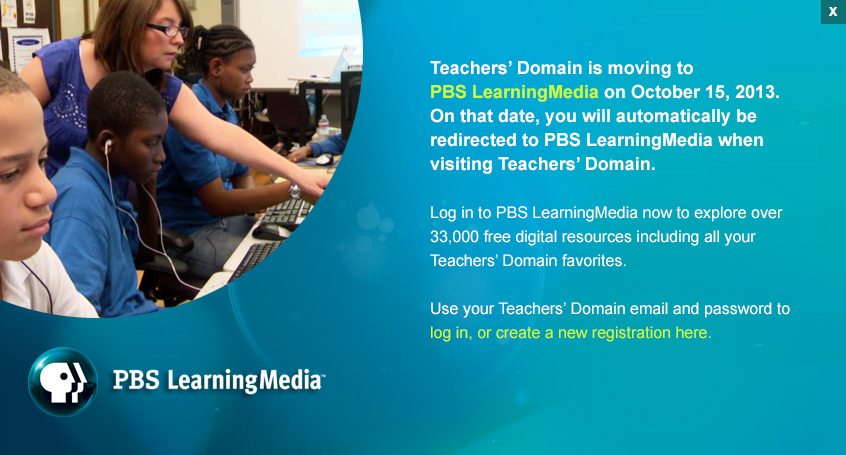Teachers' Domain - Digital Media for the Classroom and Professional Development
User: Preview
Periodic Table of the Elements
(Interactive)
Periodic Table of the Elements essay
(Document)
Repeating Patterns: The Shape of the Periodic Table
(Lesson Plan)
The Strange World of the Electron
(Lesson Plan)
 Loading Standards
Loading StandardsThe periodic table is an essential part of any chemistry course. Its simple chart-like appearance belies the wealth of information that it contains. In this activity, students learn about the origin of the modern periodic table of elements and explore an interactive version that teaches them how to extract information from it. This activity is the first of three lessons. The Strange World of the Electron and Repeating Patterns: The Shape of the Periodic Table will help to further students' understanding of this powerful tool.
1. Describe or read the following summary of research on the structure of the atom:
By the end of the nineteenth century, most scientists agreed on the existence of atoms and, thanks to the work of a physicist named J. J. Thomson, knew that these structures contained particles called electrons. Thomson proposed that the atom is a sphere filled with positively charged matter that contains negatively charged electrons embedded in it like plums in a pudding.
Today's "nuclear model" of the atom, first proposed by physicist Ernest Rutherford, is very different from Thomson's model. In it, the nucleus, which carries all of the positive charge and 99.9 percent of the atom's mass, is at the center of the atom. Orbiting at a distance of up to 100,000 times the diameter of the nucleus are the electrons. These tiny particles are anything but inconsequential, however. We now know that their arrangement and behavior is responsible for each element's unique set of chemical characteristics.
2. Distribute the Periodic Table of the Elements essay handout and have students read it. When they have finished, lead a discussion about how it was possible for Mendeleyev to develop a periodic table of elements before atomic structure, the essence of the table, was even known. (You might relate Mendeleyev's work to that of Gregor Mendel, who worked out the rules of simple genetics, or Charles Darwin, who described evolution by natural selection, both without specific knowledge of genes.)
3. Ask students to work in pairs as they explore the Periodic Table of the Elements interactive activity. Direct students to several sample elements within the interactive and identify the following information specific to each:
4. Distribute copies of the Chemistry Scavenger Hunt (PDF) handout and allow 10 minutes for pairs of students to locate the missing information. You may create additional scavenger hunt entries -- this time with less starting information. Just be sure that at least one of the shaded columns is filled in to allow students to locate each element on the table.
Ask students to work independently to create their own Chemistry Scavenger Hunt. Tell them to plan the table so that the left column symbols, when placed in order side by side, spell a word. The symbols for francium (Fr), iodine (I), carbon (C), titanium (Ti), oxygen (O), and nitrogen (N), for example, spell the word friction.
The ChemEd Digital Library has assembled a Resource Pack of materials on the Periodic Table, selected from a variety on NSDL Pathways.
 Teachers' Domain is proud to be a Pathways portal to the National Science Digital Library.
Teachers' Domain is proud to be a Pathways portal to the National Science Digital Library.
